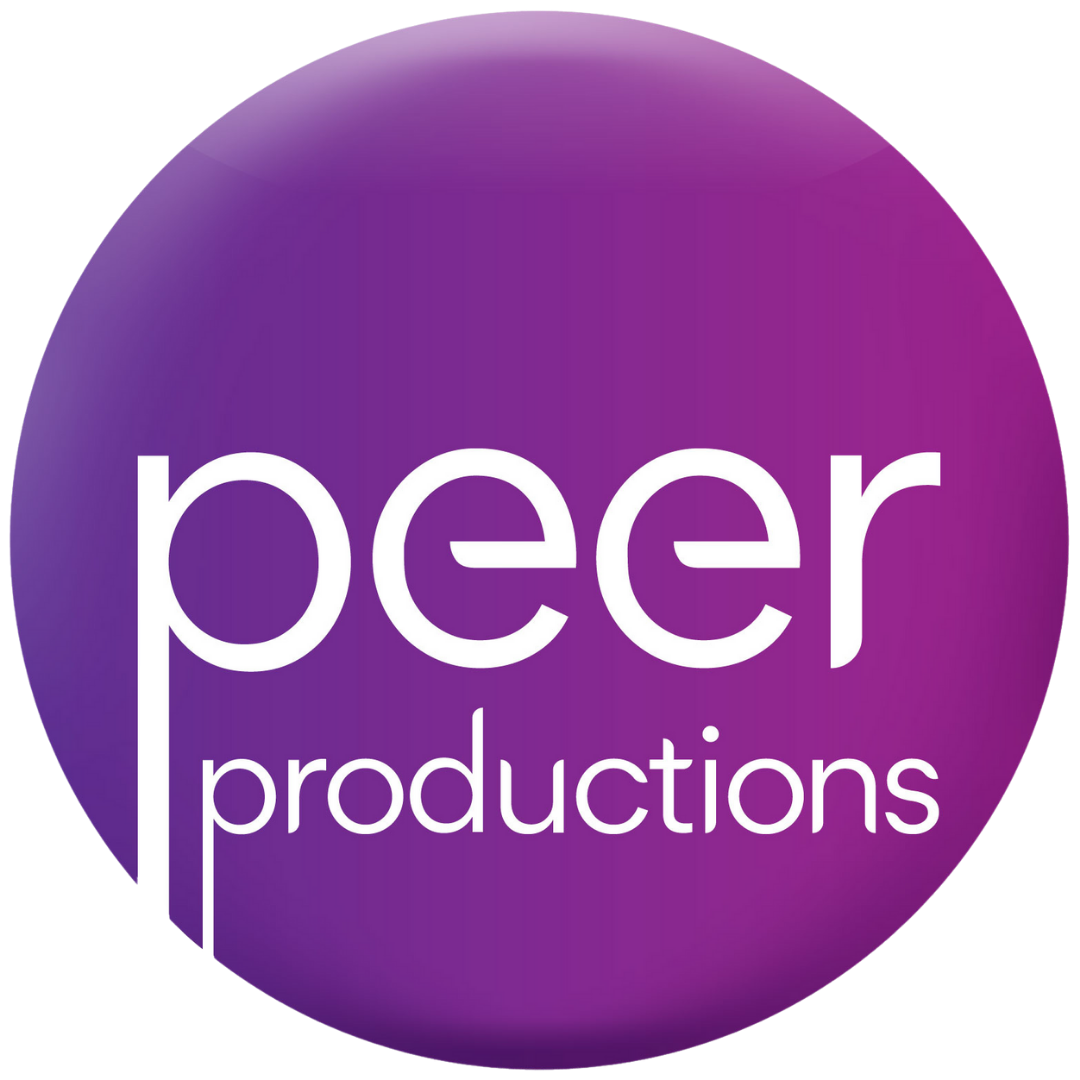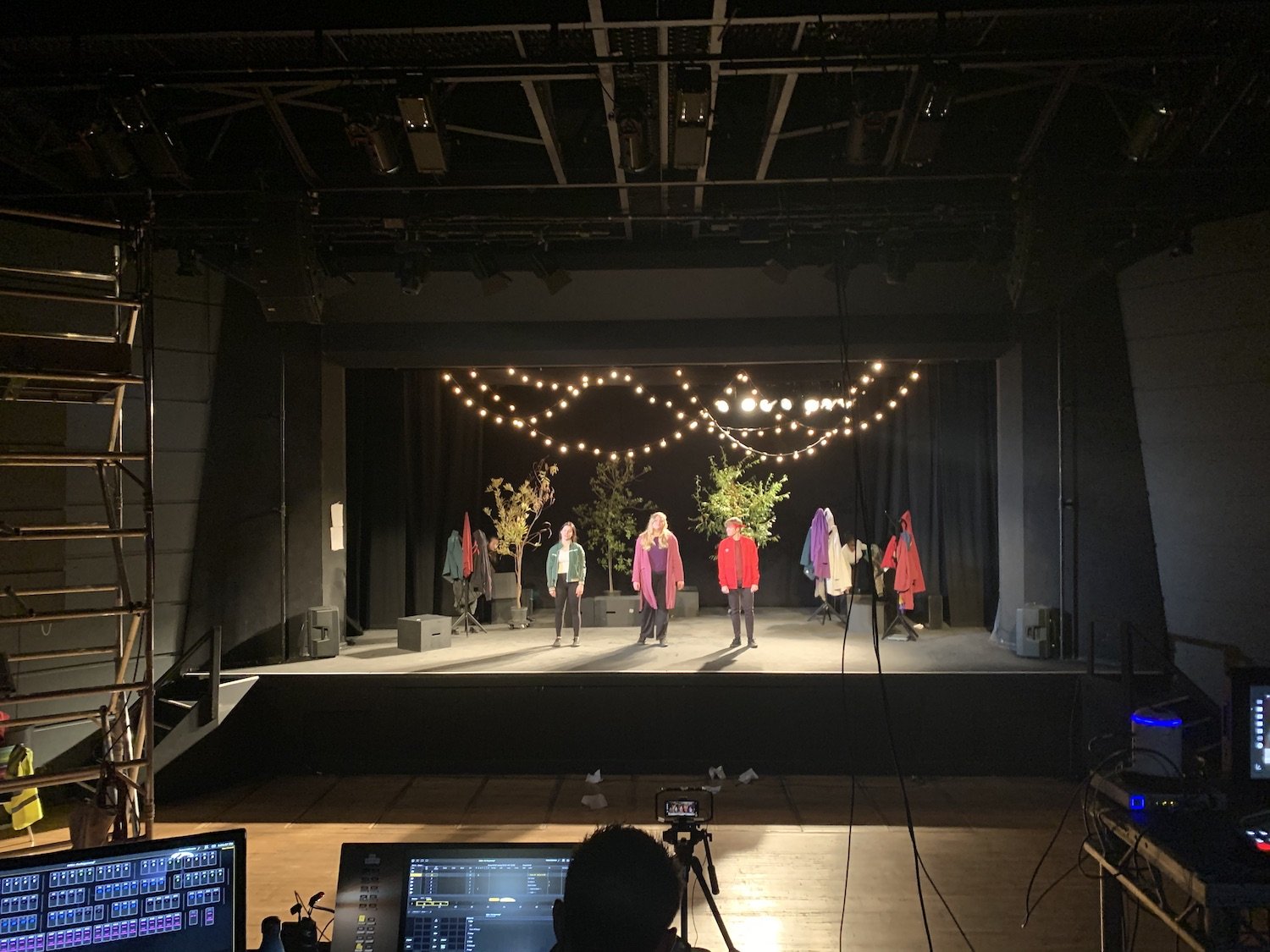Hidden Goes Digital
By Lauren Throup and Nina Lemon
Playwright and Peer Productions creative director, Nina Lemon, talks us through Peer’s flagship digital product - Hidden, A play about self-worth, self harm and mental health.
Our creative director, Nina, recently sat down with me to talk through our flagship digital product, Hidden.
Peer Productions has been touring Hidden in person to schools across Surrey since 2016 but, with a digital version of the show now available, we hope more teachers and students will be able to access this resource. Read on for the full interview with Nina, or click the button below to visit our dedicated Digital Resource page for Hidden.
Lauren: So Nina, What is Hidden about?
Nina: Hidden tells the story of three young people who have recovered from self-harming behaviours. We meet Matt, Sophia and Tash at a music festival. Although they have completely different backgrounds, they have all shared the same problem. The play looks at why they started to self-harm and, crucially, how they learned to stop.
L: Why did you want to create this resource?
N: I wanted to to write this play as self-harm is sadly a common experience for young people. Although it’s often a hidden problem, most estimates suggest that as many as one in five young people experience this problem - That means that every young person will know someone who is affected.
L: Why has Peer created this resource as a digital product?
N: We wanted to create a digital version of the show in response to the Covid-19 pandemic so that we could keep supporting young people even when touring wasn’t possible, but we also wanted to extend the reach of our work. Currently, we tour to local schools and that's something we have been able to start up again, but, as a complete standalone product, this digital package is something that could be used in schools anywhere it's needed, and it’s designed to support the national curriculum for the whole of the UK.
L: What is included in this digital package, and how can teachers use it in their classrooms?
N: Alongside the recorded production that’s available to watch as a digital stream we’ve put together a teachers’ pack with resources and lesson plans, both for Drama and for PSHE. These include resources to support teachers and students when talking about the difficult subject areas covered in the show, like self-harm and mental health.
L: What message would you want a young person who sees the play to take away with them?
N: I would hope that if you're a young person who watches Hidden, and you're experiencing these problems then you'll realise that you can reach out to someone. I hope that if you're a young person whose friend is having those problems that you'll be better equipped to help them and to help them get help - and, ultimately, I want to spread the message that recovery from self harm isn't just possible, it's actually desirable. Lots of people do recover and that you can too.
L: Thank you so much, Nina!
Nina also did a previous video interview talking about Hidden ahead of the creation of our digital package. Read on for the transcript of that interview, or click the thumbnail to watch it for yourself.
What was the context in which you originally wrote Hidden?
N: I wrote Hidden back in 2015 in response to the enormous mental health crisis that was happening and is still happening for teenagers across the UK. I actually avoided writing it for quite a long time. All of the plays I've written for Peer are about the topics and issues that matter most to young people - and that young people themselves, or teachers or youth workers tell us are important and this topic of self-harm was coming up again and again and I was seeing evidence of it amongst the young people I was directly working with. I was really worried about writing a play on this topic, because I wasn't sure I could do the topic justice, I was worried that I could potentially do more damage and that's something I really needed to avoid. But, after several years of teachers and young people saying “we want a play on the topic, I decided I just couldn't be silent on this anymore. So I started to research a play about self harm, which eventually became Hidden.
What research did you do before starting to write Hidden?
N: The research was a really crucial part of the process. I needed to talk to young people who'd been through self harm and come out the other side. I reached out to a number of young people and we needed to make certain that those young people would be safe to share their stories because the ultimate aim of the play is to make life better for young people. We were worried that, potentially, young people could be triggered by sharing their stories so we made the decision that we were only going to talk to young people who had been free from self-harming behaviours for three years. Several young people came and did an interview with me and shared their stories. In addition to that, I looked at lots of psychological research and research from leading charities in the field to try and understand this complex phenomena that was, particularly at the time, really increasing very, very rapidly. During the year that I wrote Hidden, the number of young people going to A&E with self-harm was at an all-time high. In the survey, that's mentioned in the play, one in five fifteen year olds said that they’d self harmed in the past year. The problem felt really urgent and remains very, very urgent and it just wasn't being talked about. I think lots of people felt, like I did, that if we talked about it we might risk making the situation worse. What I discovered when I was researching the play is that many people have preconceptions about the kind of young person who will self harm, but actually any young person, any person, can be affected by self harm.
The play tackles some heavy themes, but there’s also funny moments threaded throughout. Why did you want to use humour?
N: I've deliberately used humour in the play, which is surprising to lots of people. A lot of the feedback forms we receive are from young people saying “I thought the play was going to be really miserable, when i found out what it was about”, and yeah that makes sense to me, because obviously a play about self harm does sound pretty miserable. However, young people who self-harm don't only self harm, and have no other aspects to who they are or what is going on in their lives. They are not defined by that one thing. All sorts of different people self-harm as an unhealthy coping mechanism but that doesn't mean that they don't have rich, interesting, funny lives the rest of the time. So, in order to create characters with whom the audience can connect, and the audience can find a point of recognition, we needed to use humour.
Also there has to be some relief. You can't just sit through a play that is all heavy heavy heavy. You need those moments of lightness - moments like the bus journey to Thorpe Park, or the moment where we meet the obnoxious public school girls at Sofia’s school. Those moments are kind of needed to release the pressure valve so that we can laugh and then continue back into the story without being traumatised by what we're seeing.
CAN YOU Tell us more about the three main characters?
N: There are three main characters in the play - Matt, Sophia and Tash. This is really important because if I only told one story it might look like I was saying that only one type of person is affected by self harm, and actually a very wide range of people are affected by self harm, for all sorts of different reasons.
In Matt's case, although he seems like a very jovial upbeat kind of character, underneath he suffers from stress and anxiety and he really feels the pressure of school. It's actually not doing particularly well in a school exam that triggers him to start self harming. The interesting thing in Matt's story is that he'd never thought about self harm until his friend Hayley discloses that she's been self harming and that was a story lifted directly from a young person who shared their story with me. It's important to acknowledge that Matt has an excellent relationship with his Mum and, when he shows her his scars, she is so supportive and so kind and so loving and really demonstrates to the audience how to support someone who is struggling with self harm.
In contrast we have Sofia. Sofia is a character who really struggles to manage her emotions and we see that right from the beginning when she's quite a young child and becomes incredibly upset by quite a minor issue between her friends. For Sofia, because her emotions are so overwhelming, and she hasn't learned coping strategies; and although her parents mean well, they're quite absent from her- there are not people in her life that she can confide in easily. She has this terribly low self esteem and so, in the absence of being able to express her emotions and have those emotions heard, she's kind of repressed a fear of looking like a crybaby and so her behaviours and her self harming behaviours are a way of coping with those feelings.
She's also subject to peer pressure when Emily offers Sofia laxatives. She really feels that pressure because taking those laxatives could mean that she can become part of this elite, very toxic group of girls. That's very appealing to her because she hates to feel different. She is perceived as larger than the other girls and that bothers her. She has very low self esteem and feels very self conscious about her body.
I also chose to make Sofia wealthy because there was this idea that if you had money, if you had a privilege, that you couldn't really be affected by these issues but mental health affects everyone regardless of age, gender, sexuality, economic background, or ethnicity. Mental health and the problems with self harm can affect everyone and i wanted to try and show that in the play.
Tash - as a teenager, is much more of an introverted character. She is living with the burden of these very disturbing memories of having been abused by her mothers boyfriend when she was a child and this adverse childhood experience does pay a part in why Tash goes on to self harm. She really struggles. And her mum struggles and doesn't know how to manage the situation and that tension is really central to the play.
So these three characters come together at a music festival and i chose a music festival because lots of different types of people would go to a music festival; people from different walks of life could meet. This is a play about recovery and so it was really important, in terms of structure, that we start from the end and that we start from the place of recovery. So we know, when we see Tash collapse in the play, that she recovers. We know she’s okay because we've seen her a year later at the music festival.
The music festival is a place of joy and recovery and reflection.




